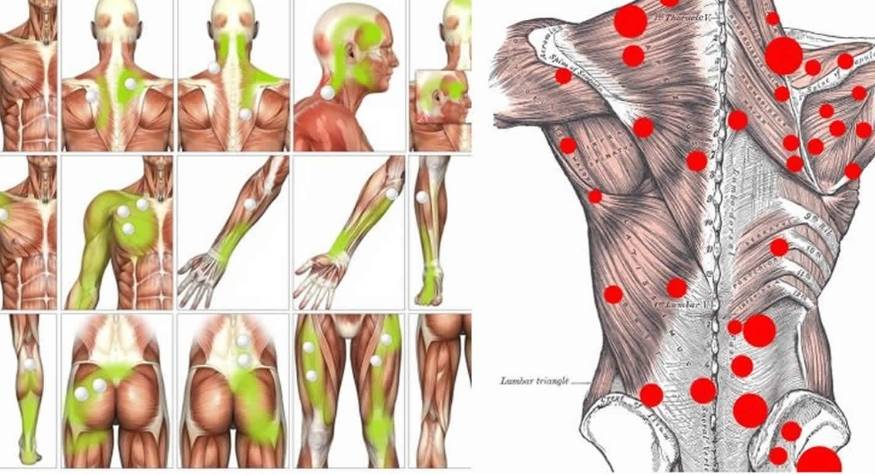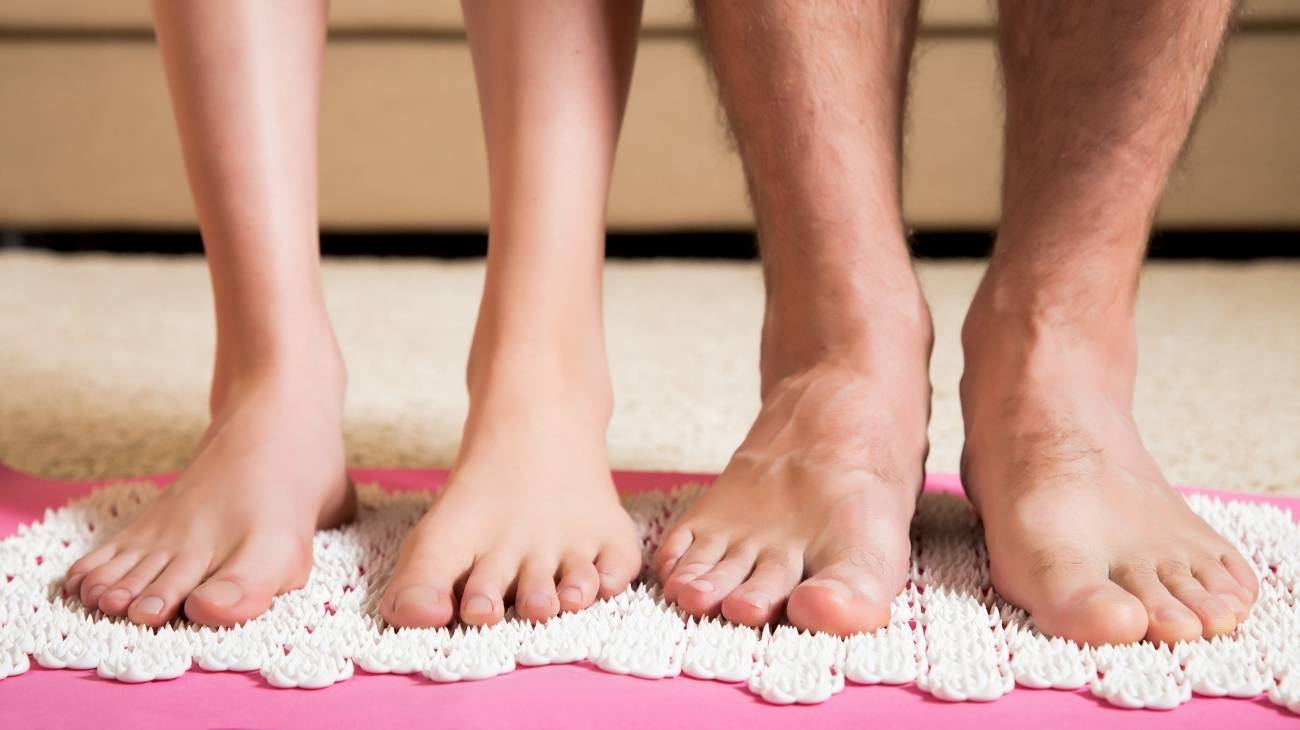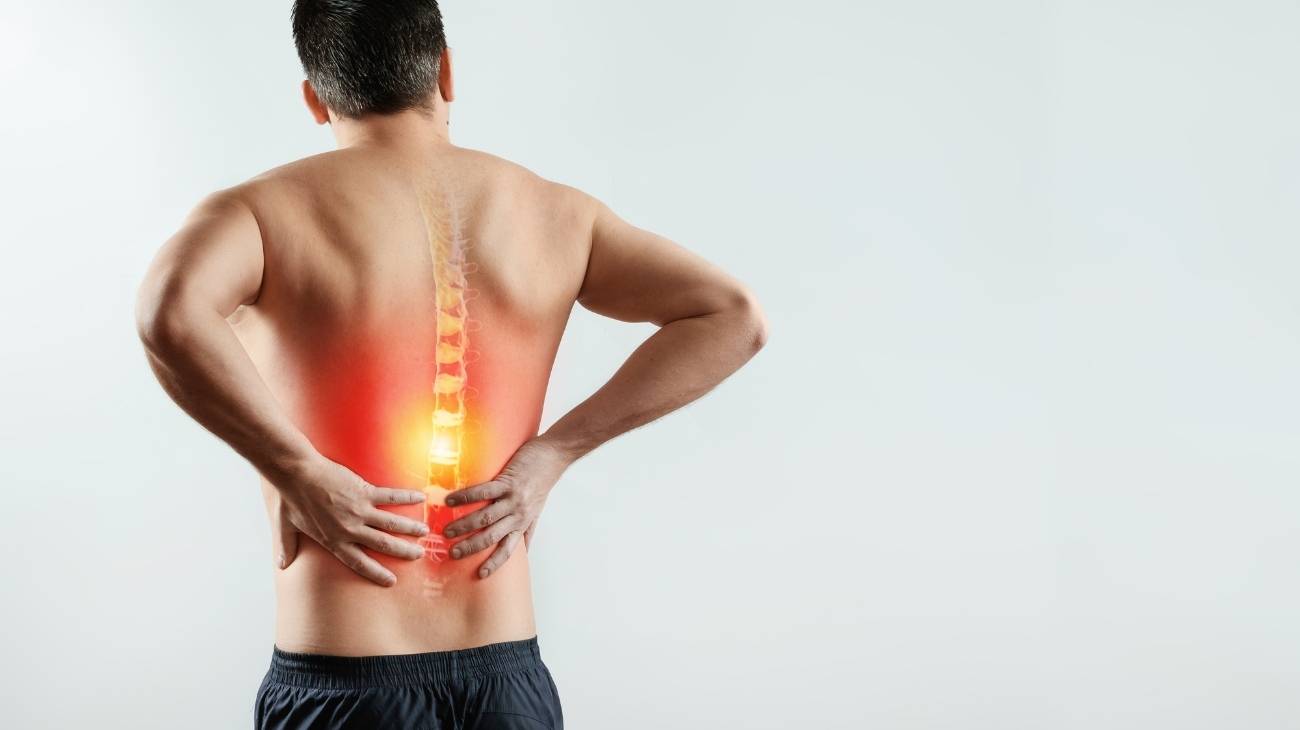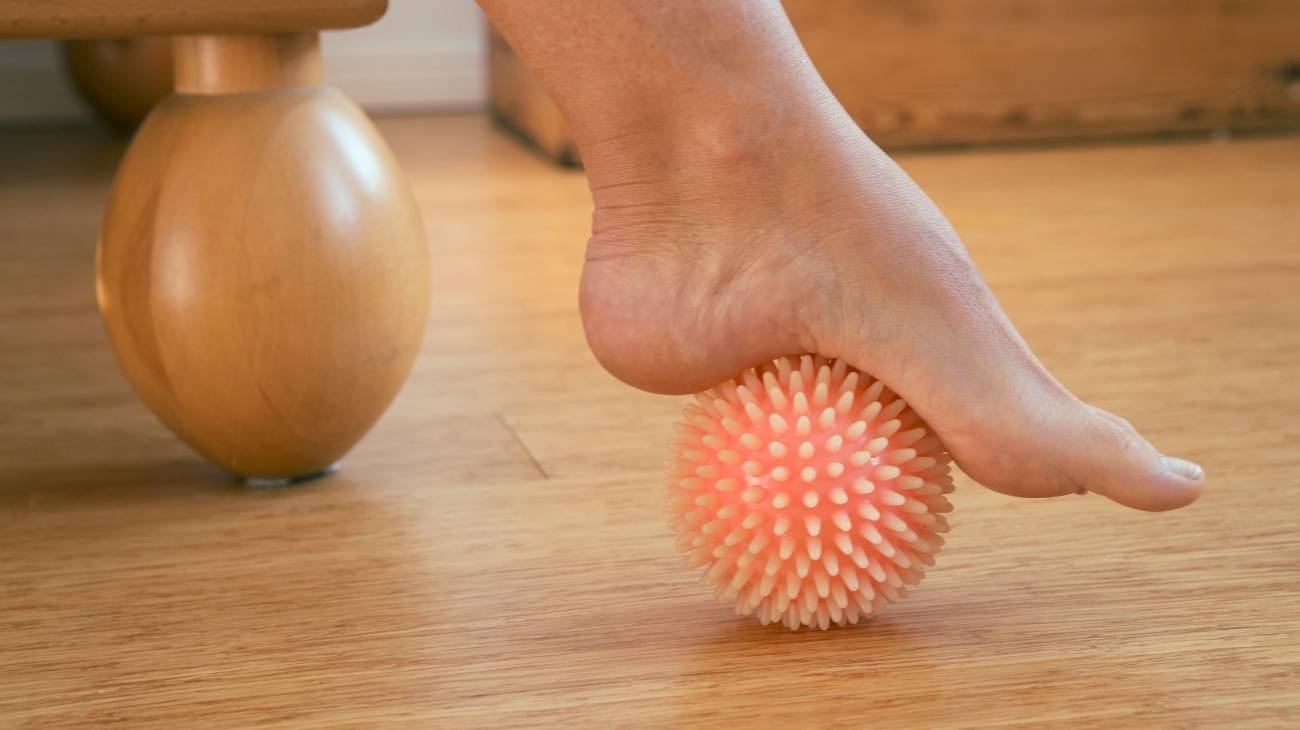Muscle soreness is a real problem when it becomes chronic. Not only because of the simple fact that it is annoying to suffer from an ailment, but also because often there is no known cause or apparent reason for it. When this happens, you may be suffering from a myofascial trigger point.
Myofascial trigger points are areas of tension deep within muscle tissue that cause pain. Fortunately, with the help of a foam roller, these tension points can be released and thus prevent pain related to them.
What are trigger points and what causes them?
A trigger point is an area where myofascial tissue has shortened causing it to contract and create a palpable point or area of tension. The reasons why this can occur are varied; from a poorly healed muscle injury that causes permanent damage, to the loss of nutrients and elasticity of the tissues due to age.
Either way, the trigger point represents one of the main causes of pain in high-impact athletes or elderly people. The most problematic thing about them is that they usually cause referred rather than direct pain, which means that they do not usually hurt intensely in the exact area where they appear, but in some adjacent muscle or muscle area that apparently has no direct relation to the place where the trigger point appears.
What is fascia?
To understand what a trigger point is, you need to know the tissue in which it appears. Fascia is a thin network of tissue that connects muscles to their respective blood vessels, nerves, bones and joints. Thanks to it, the whole complex nervous, skeletal muscle and joint systems work in harmony as one.
This tissue, in addition to functioning as a connector, is also an important support for both muscles and nerves, as it gives stability to the union of both. But not only that, it is also responsible for absorbing the impact generated by the different motor activities we perform every day.
Every time we suffer an injury, the myofascial tissue that covers the injured muscle suffers damage that, if not repaired properly, causes it to shorten, which also occurs due to poor diet, lack of minerals, poor hydration and even the loss of elasticity of muscles and soft tissues due to age. It is this shortening that facilitates the appearance of so-called myofascial trigger points.
What is myofascial pain syndrome?
When the fascia is shortened too much, perennial damage is done to the entire fascial structure. This causes multiple trigger points to be generated at the same time, causing an enormous amount of muscle pain to occur simultaneously. This condition is known as myofascial pain syndrome, a chronic and irreparable problem.
Myofascial pain syndrome is often confused with fibromyalgia, which is another chronic condition in which multiple muscle pains are experienced throughout the body, the difference being that fibromyalgia does not consider trigger points as a likely cause of pain.
What are the symptoms of a trigger point?
Myofascial trigger points present a rather peculiar symptomatology, which causes them to be constantly confused with other ailments such as fibromyalgia or simple muscle injuries that appear for no apparent reason.
Among these symptoms, the following can be identified:
- Acute and persistent pain.
- Occurs after the muscle has been subjected to a lot of wear and tear.
- Pain when trying to use the affected muscle.
- Tenderness to touch in the sore muscle
- Sudden tingling and cramping.
- Muscle instability
- Imbalance and joint instability after sprains
- Ringing in the ears
Bestseller
What are the benefits of using the Foam Roller to release trigger points?
Undoubtedly one of the best ways to combat myofascial pain syndrome without the need for drug therapy is the foam roller. This is a foam roller that is used to massage and release tension in all muscles and joints, which brings a huge amount of benefits such as:
- Relief of myofascial pain: the first advantage is that you will naturally relieve the pain caused by trigger points, which will allow you to cope with myofascial pain syndrome in a much less uncomfortable way thanks to its analgesic effect.
- Avoid aches and pains: performing full body routines with the foam roller will keep the muscle fibres free of tension, thus preventing trigger points from forming on a regular basis, and therefore reducing the regularity with which these pains will affect you.
- Strengthens joints: myofascial release therapy with the foam roller will strengthen the soft tissues of the joints, making them more stable and less prone to injury.
- Increases the RMA: exercising the joints with this product will increase the radius of joint movement, which will make them more flexible and therefore less affected by the formation of trigger points.
- Release endorphins: after a complete routine your body will begin to release endorphins as a result of the activity performed, and also because of the large amount of tension that you will have released from all your myofascial and muscular tissue.
- Avoid DOMS or muscle soreness: if you are one of those who suffer from stiffness or DOMS the day after training, with the foam roller you can reduce the intensity of these and even prevent them from appearing so regularly in the future.
These are just some of the most notable benefits. You should also know that this therapy also reduces the risk of future injury, improves blood circulation throughout the body, and strengthens muscles to prevent them from contracting, straining or even tearing.
How to relieve trigger point pain using the Foam Roller?
Now that you know what myofascial pain points are, it's time to learn how to eliminate this ailment through regular use of the foam roller, so that you can also take advantage of all its benefits. Here's a step-by-step guide on how to eliminate your body's trigger points using the foam roller.
Find the pain point
The first thing to do is to identify where the trigger point is located. This can be difficult at first as they are not always in specific locations. While there are areas that are more or less prone to trigger points, such as the back or hamstrings, the reality is that they can occur anywhere on the body.
What you need to do to identify one is the following:
- With the palm of your hand and your fingertips, gently massage every muscle in your body. Preferably do this with light circular movements and without applying too much force to them.
- The myofascial pain point will feel like a tight knot, which is held in this way involuntarily, or like a section of a muscle in the same state.
- In areas where you cannot comfortably access such as your back, proceed to stick out your chest and contract your back while moving your shoulders up and down.
- As you perform this movement, be aware if any section of the muscle feels numb or generates a slight ache like a stiffness even though you haven't done any exercise recently, indicating a point of tension in the fascia.
You may find it difficult to identify a myofascial pain point the first time you try it, so it is advisable to see a physiotherapist who can identify them more accurately while you gain the mastery to do it on your own.
Myofascial release exercises
Exercises with the foam roller to release the fascia consist of applying it directly to the muscle tissue. This provides an effective self-massage that releases tension in the deeper tissues of the muscle and dilutes any trigger points. They all work on the same principle of rolling over a specific muscle or muscle region.
Here are some of the easiest and most beneficial exercises and positions to perform:
- Roll over the fascia lata and gluteus medius: lie on your side and lift your hamstring by leaning on the elbow of the lower arm. Then we place the foam roller right on the side of the hip, making the gluteus medius and the waist rest on it. Now you only have to use the support arm to roll and roll the roller from the upper thigh area to the lateral base of the pelvis, when you finish with one side proceed to exercise the other. This movement should be maintained for at least 5 minutes.
- Roll over back: lie on your back and position the foam roller just behind your shoulders at the base of your trapezius muscles. Now lift your hips by supporting yourself with your legs to create a bent bridge and proceed to stretch or pick them up to roll with the foam roller over your entire back. As you do this, lean slightly to the right and left to massage the erector spinae and lower back muscles.
- Roll on the hamstrings: lying on your back, place the roller under your hamstrings and lift your pelvis by leaning on your arms. Now use them to roll on the foam roller with your hamstrings from the base of your knee to the bottom of your buttocks. Then you must get into the opposite position, lying on your stomach and raising your back with your hands in the form of a plank, to roll again but this time on your quadriceps.
- Roll on the serratus muscle: similar to the first exercise, we lie on our side but this time we roll on the serratus muscle which is on the side of the torso at chest level, just below the armpit. We raise our hips, leaning on our legs, stretch the arm that is on the lower part and with the other arm we help ourselves to roll slightly up and down to massage the whole muscle. Hold for 5 minutes and then move to the next side.
Regularity of sessions
The regularity of the foam roller sessions will depend on the severity of the problem. If the trigger points appear sporadically, it is possible that doing the exercises once or twice a week will be more than enough to keep you free of pain and take advantage of all the benefits that the product provides for you.
With this regularity you will achieve an increase in the radius of joint movement, better blood circulation, muscles more resistant to fatigue and greater elasticity in the soft tissues to prevent trigger points from forming easily in the future.
If, on the other hand, your problem is as severe as myofascial pain syndrome, and trigger points are abundant in your myofascial tissues, the regularity will be defined by your trusted physiotherapist. It is usually sufficient to apply it 3 times a week, but some specialists recommend doing it every day.
In any case, you should not see this regularity as an imposition, but as a new habit that you must acquire in order to have a better quality of life free of muscular pain. Moreover, it is not that demanding a routine, since with the exercises we recommend above you will be able to release practically all the muscles in your body, and finish in less than 30 minutes.
Progressions
Although it may seem simple, the reality is that not all foam roller exercises are easy to perform. Some positions are very demanding, especially those that require you to hold a plank or support your body weight on one limb for several minutes. That's why it's important to progress progressively, so that you enjoy each routine and it doesn't become an ordeal.
The areas in which you should gradually increase the intensity are:
- Exercise time: most foam roller exercises are performed based on time and not repetitions, which means that you will have to hold a position for 5 minutes or even longer. Reaching these times is very difficult at first, so it is recommended to start progressively from 30 seconds and build up as you get stronger.
- Positions: positions are crucial as maintaining a bad posture during a session can bring more problems than benefits. Although it may not seem like it, some positions are more difficult than they look, and require a certain amount of strength in the core stabiliser muscles. It is best to first spend a few days practising the more complex positions without the foam roller; then add the roller and hold the position without rolling on it; and once you feel comfortable in the previous two stages, proceed to move on the product.
- Rolling: rolling on the foam roller is not as easy as it sounds; you need to maintain a slow and steady pulse that moves slowly and steeply through each muscle. This will place demands on stabiliser muscles such as the abdominals, mid back and lower back, both in strength and anaerobic endurance. You can start by rolling only in one direction, then pause and try rolling in the other direction, until you become skilled enough to be able to do it more smoothly.
- Regularity: acquiring the anaerobic endurance and mettle to perform long foam roller routines should be a personal goal, and establish a non-negotiable regularity to your routines. This is essential at the beginning as you learn everything you need to know to perfect the exercises, and it is also the stage at which you start to adopt this practice as a healthy habit.
What are the best alternatives to the Foam Roller to relieve myofascial pain?
In addition to the foam roller, there are other products and articles that can help you perfectly in your goal of eliminating trigger points and the pain they cause throughout your body. Here are the best alternatives to the foam roller.
































